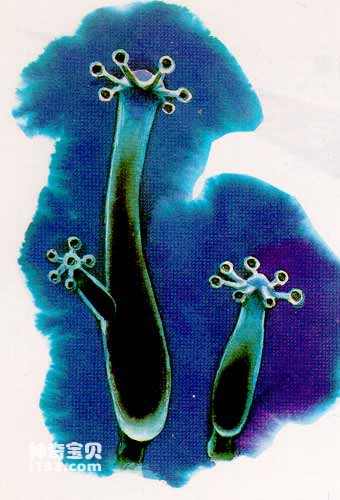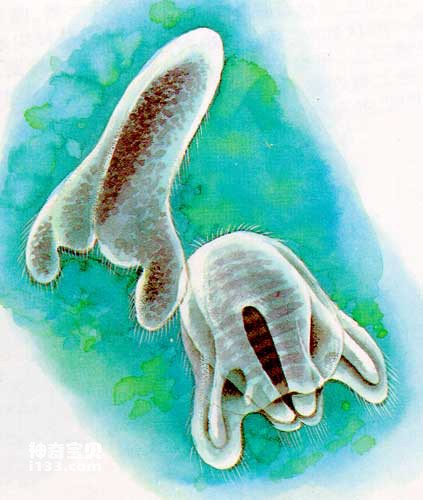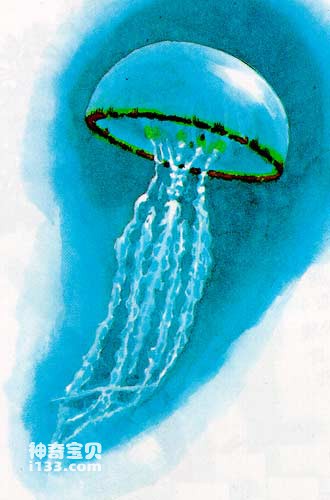In addition to corals, coelenterates also include polyps and jellyfish.
Both coelenterates and sponges are diploblasts, but they are more advanced than sponges because they already have the division of labor between nerve cells and primitive muscle cells. Coelenterates also have a central cavity for digesting food. This cavity is also called the digestive cavity or intestinal cavity. It is the existence of this cavity that gives them the name "coelenterates". Another interesting feature of this cavity is that it does not have two mouths like higher animals - an entrance for food and an exit for excrement. It has only one mouth, which is both an entrance for food and an outlet for excretion.

Hydra
Coelenterates have appeared in the earth's oceans as early as the Precambrian. 76% of the fossils found in the Precambrian Ediacaran fauna of Australia are coelenterates, the main ones being primitive jellyfish. It can be seen that the Earth's oceans in the Precambrian were really a world of jellyfish. Since the Cambrian, other categories of coelenterates have emerged one after another, and they are still very prosperous today. There are currently about 9,000 to 10,000 known species of coelenterates.

jellyfish
Based on the structure of the body, scientists first divided coelenterates into two subphyla: Cnidaria and Acnidaria. The subphylum Cnidaria includes 4 classes: Hydrozoa, Primordial Medusa, Medusae, and Coralida. The Cnidaria subphylum has only one class, Ctenophora, and they are all modern animals with no fossil representatives found.
Most of the hydrozoans are aquarium/52-marine-animals.html">marine animals, and a few live in fresh water. They come in many shapes, but the basic types are polyp and jellyfish. Most of the hydrozoans have a generational alternation between the polyp type and the jellyfish type throughout their lives. A few species do not have the jellyfish type or the jellyfish type is underdeveloped, and some species do not have the polyp type or the polyp type is underdeveloped. Polyp-type animals are very small, generally no more than 2 to 3 centimeters in diameter. They are not as large as the polyp-type individuals of Anthozoa. They have bag-shaped, cup-shaped, or cylindrical shapes and mostly live in groups.

The stromatoporoids are fossil representatives of Hydrozoa. They appeared in the Cambrian period and lasted until the Cretaceous period, and then became extinct. They are all reef-building organisms that maintain benthic life on the seabed. The Silurian and Devonian periods were their peak periods and were also the main periods of reef-building.
The shapes of jellyfish in the class Primordial Medusa are oval and disc-shaped. After they appeared in the Precambrian, they became extinct in the Ordovician.
All medusae are marine organisms that swim freely or live sedentary lives. Most of them are large jellyfish. For example, the jellyfish we are familiar with and often eat is a bowl jellyfish. Tricholiths are the main fossil representative animals among the medusae. Their fossils are mainly found in the strata from the early Cape of Good Hope to the Permian, especially in the Silurian and Devonian strata.
animal tags: Coelenterate Hydra Jellyfish
We created this article in conjunction with AI technology, then made sure it was fact-checked and edited by a Animals Top editor.